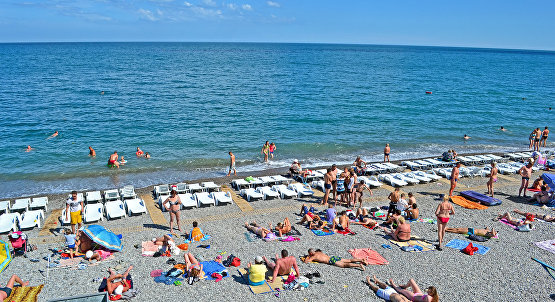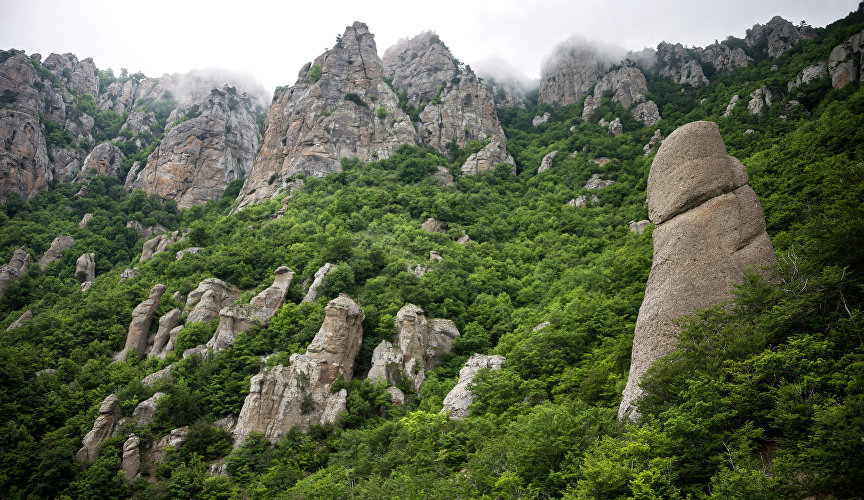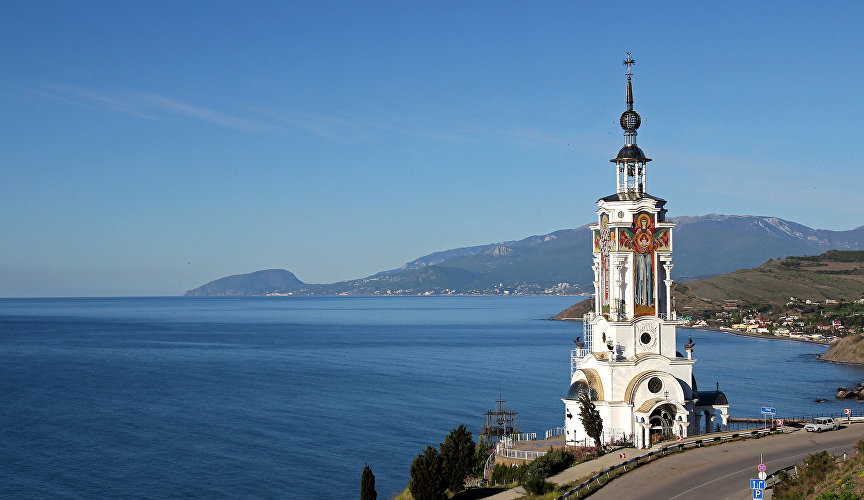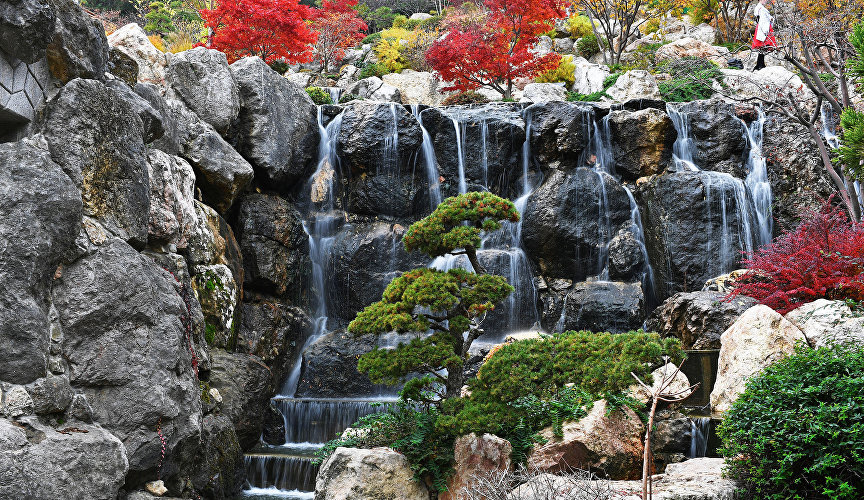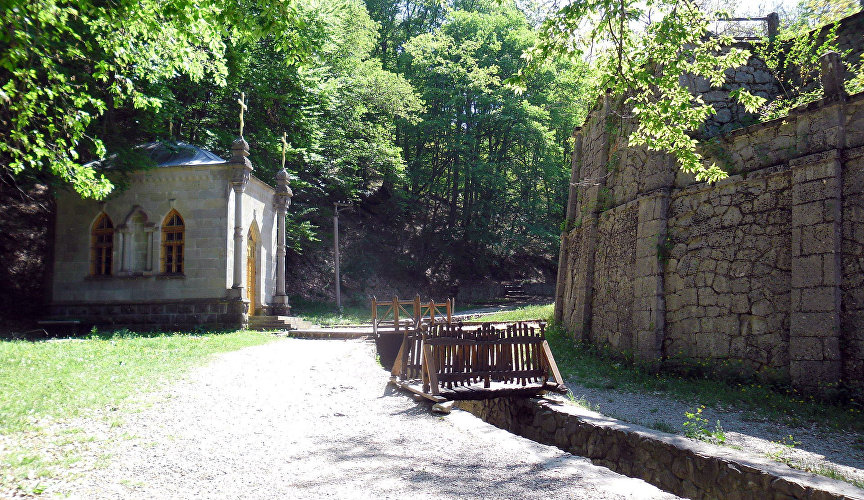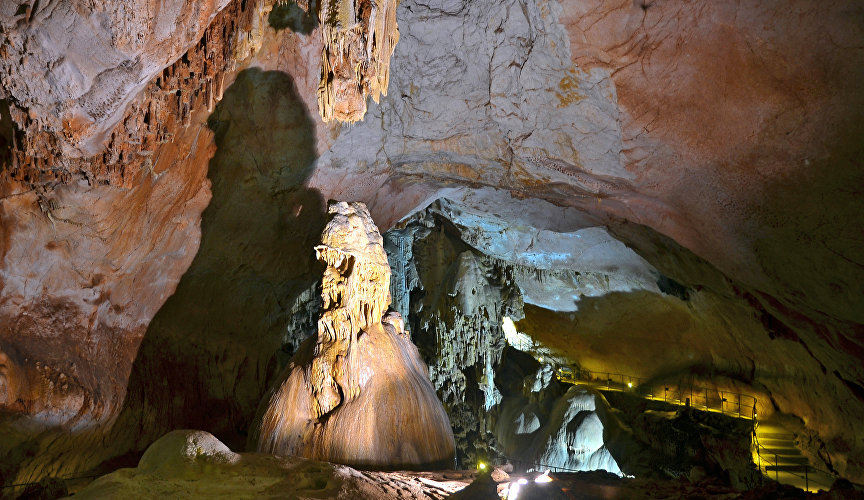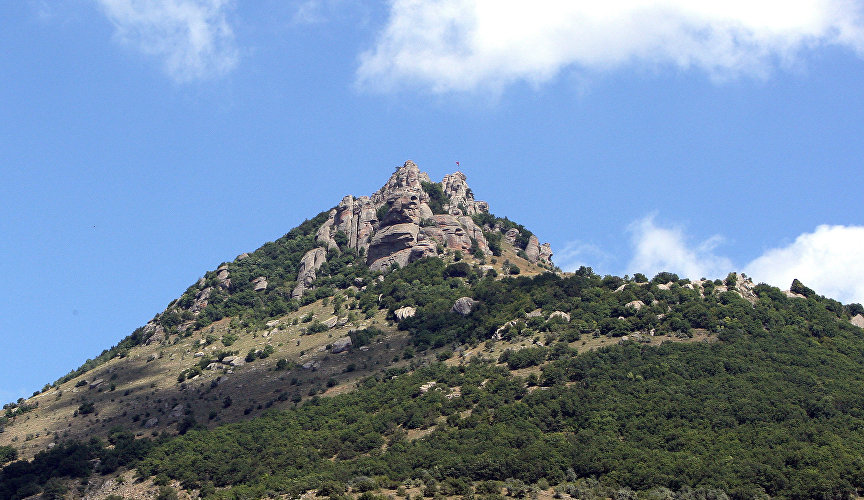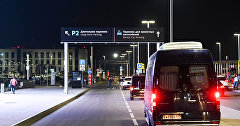Alushta is the second most popular resort on the southern coast after Yalta. Today Greater Alushta also includes several coastal towns and the most famous of them is Malorechensky with its lighthouse church.
The Aluston Fortress was built in the 6th century on the orders of Emperor Justinian I. In the Middle Ages the city was an important point of defence for the empires and kingdoms that controlled the peninsula's southern coast. The Turkish army landed in Alushta during the Russo-Turkish War. Lieutenant-Colonel Mikhail Kutuzov excelled in the battle near the village of Shuma, in which he was severely wounded: the future great commander lost his eye. There is a monument and a fountain dedicated to Kutuzov installed in the village of Luchistoye on the motorway near Alushta.
As a resort, Alushta's history dates back to the late 19th century. It was hugely popular in the 1950s, when dozens of health resorts and hotels opened there.
Today Alushta is synonymous with seaside holidays amid mountains and forests. It offers great beaches and countless opportunities for active leisure. Business tourism is also developing due to new modern hotels with excellent infrastructure.
Alushta has several mineral springs, whose water is used at the health resorts to treat neurological, cardiovascular and musculoskeletal disorders.
Alushta is situated on the coast of the Black Sea surrounded by forests and mountains. The most popular peaks are Chatyr Dag and Demerdzhi with the picturesque Valley of Ghosts. The route around the Crimean Nature Reserve, a specially protected area that is only accessible by car, begins in Alushta. The nature reserve offers organised tours of the area but the number of visits is limited, so it is better to register in advance.
There are five small rivers running through the city: Chelmekchi, Kamazova, Ulu-Uzen, Demerdzhi and Kharach-Kechme. Every town on Greater Alushta is also located near a mountain river. There also are two large waterfalls: Golovkinsky and Dzhur-Dzhur.
Alushta has hot summers and mild winters. It is relatively dry and it rains mostly in the period between October and February. February is the coldest month with the average temperature of 2.9˚C, and July is the hottest with the average temperature of 23.8˚C. The water temperature never drops lower than 8˚C, event at the coldest time.
The swimming season lasts from May to October, with the average water temperature of 17.5˚C. The sea is the warmest between July and September with temperatures ranging from 22˚C to 25˚C. Storms are rare and short in the summer.
- The Valley of Ghosts with dozens of stone figures created by nature is located at the base of the Demerdzhi Mountain. The centuries-old figures have unusual shapes and resemble people, animals and fantastic creatures.
- The lighthouse church of St Nicholas is situated in Malorechenskoye. It was built as part of the memorial to those who perished in the sea in 2006. The Water Disaster Museum occupies the ground floor.
- The Aivazovskoye Park in Partenit is one of Crimea's largest and most modern parks. The aroma garden with a rich collection of essential oil rich plants is located near a Japanese bonsai garden, a Mexican cacti garden, a 200-year-old olive grove and a giant sequoia.
- The Sotera Valley has one of Crimea's wonders: oddly shaped geological residues called "stone mushrooms."
- The Djur-Djur Waterfall, the largest and most full-flowing in Crimea.
- Small Alushta museums dedicated to famous authors: the House Museum of Ivan Shmelyov and the House Museum of Sergeyev-Tsensky.
- The Monastery of Sts Cosmas and Damian in the Crimean Nature Reserve. Due to its status of a specially protected area, the access to the monastery is only available on 14 July, the Day of Sts Cosmas and Damian.
- The Alushta Museum of Stone with about 1,000 samples of minerals and gems from all over the world.
- The Mindalnaya Roshcha Waterpark, the Alushta Dolphinarium, aquarium, the nature museum, arboretum, zoo and the Crimea in Miniature Park.
1/6
Valley of Ghosts
RIA Novosti, Aleksey Malgavko
2/6
St Nicholas Church Lighthouse
RIA Novosti, Yuriy Lashov
3/6
Aivazovskoye Park
RIA Novosti, Aleksey Malgavko
4/6
Sts Cosmas and Damian Monastery
CC0 1.0
5/6
Cave Emine-Bair-Khosar
RIA Novosti, Vladimir Sergeev
6/6
Mount Demerdzhi
RIA Novosti, Taras Litvinenko
Hide descriptionShow description
Hide descriptionShow description
Accommodation in Alushta can be divided into three categories: three and four star hotels, small private hotels and guest houses. There are less expensive guest houses right along the coast in Malorechenskoye, Solnechnogorskoye, Rybachye and Utyos.
The coastline of the Greater Alushta with its pebble beaches is 80 km long. It has beautiful embankments above the beaches with many cafes, shops and recreation areas.
The city is located 45 km from Simferopol, 36 km from Yalta and 260 km from the Crimean Bridge. There is no railway, so it is only accessible by road. It will take about an hour to get there from Simferopol's airport or railway station by bus. There are also long-distance trolleybuses leaving from the railway station. The journey will take 90 minutes.
A bus or trolleybus trip from Yalta to Alushta will take from 30 to 40 minutes.
Local buses and trolleybus can be used to travel around the city and suburbs.
Around the clock hotline of Ministry for Health Resorts and Tourism of the Republic of Crimea: +7(800)5118018
Local Administration hotline: +7(36560)25386
Official site of administration: https://alushta-adm.ru
Telephone code: 36560
Bus station: +7(36560)50343


